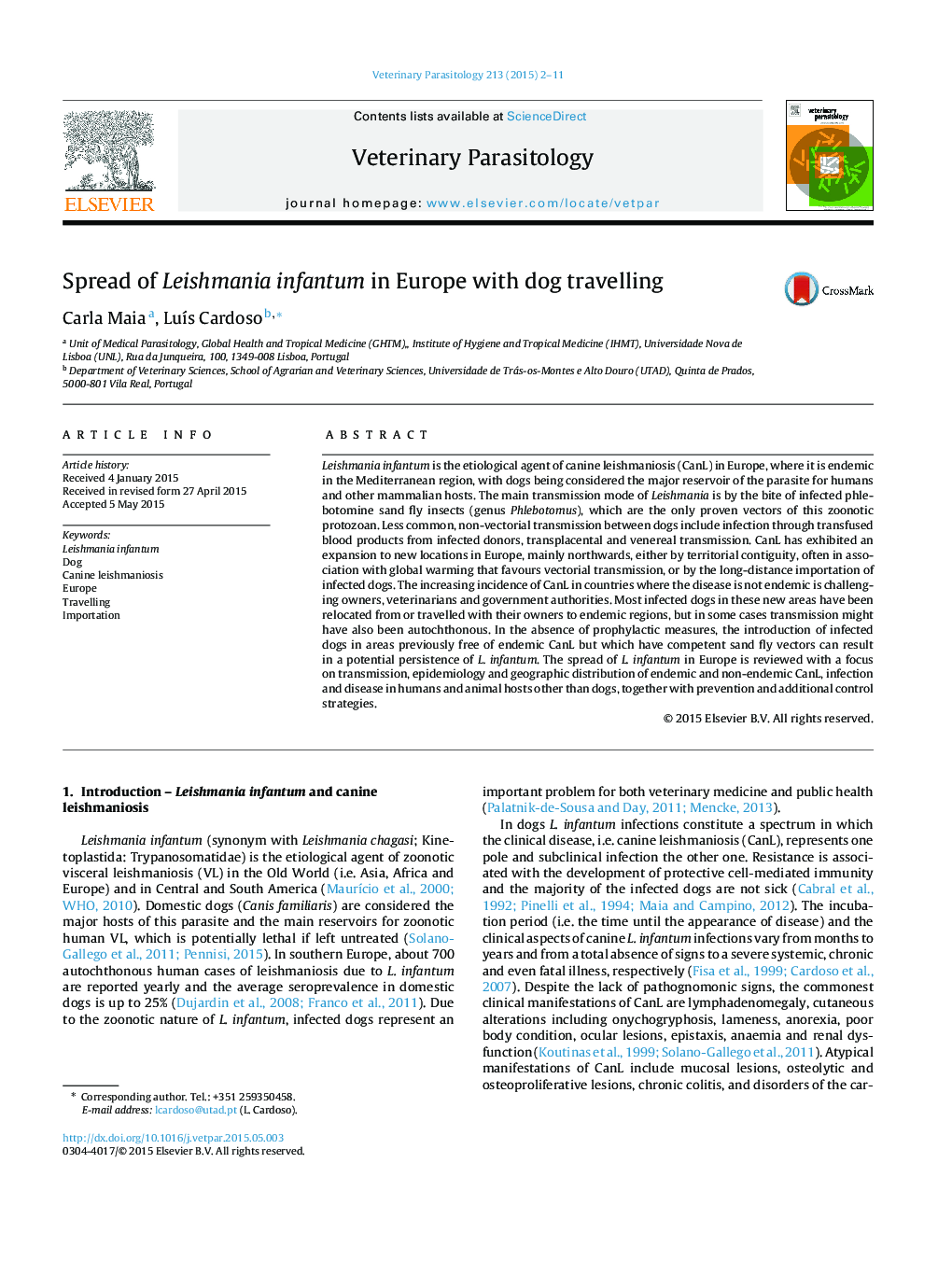| کد مقاله | کد نشریه | سال انتشار | مقاله انگلیسی | نسخه تمام متن |
|---|---|---|---|---|
| 2469975 | 1555665 | 2015 | 10 صفحه PDF | دانلود رایگان |

• Canine leishmaniosis has expanded in Europe to new locations, mainly northwards.
• Most infected dogs in those new areas have been relocated from endemic countries.
• Many other infected dogs have travelled with their owners to the same destinations.
• In some cases Leishmania infantum transmission might have been autochthonous.
• Preventive and other control measures are available and should be put in practice.
Leishmania infantum is the etiological agent of canine leishmaniosis (CanL) in Europe, where it is endemic in the Mediterranean region, with dogs being considered the major reservoir of the parasite for humans and other mammalian hosts. The main transmission mode of Leishmania is by the bite of infected phlebotomine sand fly insects (genus Phlebotomus), which are the only proven vectors of this zoonotic protozoan. Less common, non-vectorial transmission between dogs include infection through transfused blood products from infected donors, transplacental and venereal transmission. CanL has exhibited an expansion to new locations in Europe, mainly northwards, either by territorial contiguity, often in association with global warming that favours vectorial transmission, or by the long-distance importation of infected dogs. The increasing incidence of CanL in countries where the disease is not endemic is challenging owners, veterinarians and government authorities. Most infected dogs in these new areas have been relocated from or travelled with their owners to endemic regions, but in some cases transmission might have also been autochthonous. In the absence of prophylactic measures, the introduction of infected dogs in areas previously free of endemic CanL but which have competent sand fly vectors can result in a potential persistence of L. infantum. The spread of L. infantum in Europe is reviewed with a focus on transmission, epidemiology and geographic distribution of endemic and non-endemic CanL, infection and disease in humans and animal hosts other than dogs, together with prevention and additional control strategies.
Figure optionsDownload as PowerPoint slide
Journal: Veterinary Parasitology - Volume 213, Issues 1–2, 30 September 2015, Pages 2–11